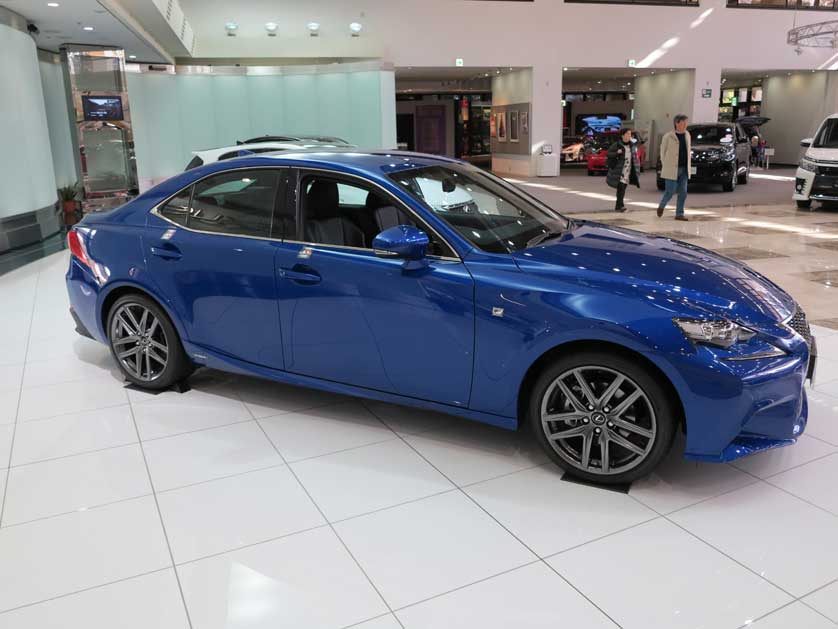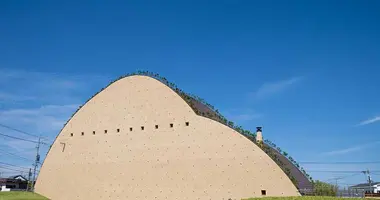Toyota City Guide: Discovering Japan's automotive capital
- Published on : 08/04/2024
- by : Japan Experience
- Youtube

Matsuzakaya Department Store, Toyota-shi Station area, Toyota city, Aichi Prefecture
Welcome to Toyota City, the heart of Japan's automotive industry and a fascinating blend of tradition and innovation. Located in Aichi Prefecture, this vibrant city offers visitors a unique glimpse into the world of cutting-edge technology while preserving its rich cultural heritage. From world-class museums to scenic natural landscapes, Toyota City has something for everyone. In this comprehensive guide, we'll explore the city's history, attractions, and practical information to help you make the most of your visit to this dynamic industrial hub.
Introduction to Toyota City: History, location, and significance
Toyota City, formerly known as Koromo, is located in central Aichi Prefecture, approximately an hour east of Nagoya by train. With a population of over 420,000 and covering an area of 918 square kilometers, it's a significant part of the Chukyo metropolitan region. The city's history dates back to the Kamakura era, but it gained prominence in the 20th century as the headquarters of Toyota Motor Corporation.
In 1959, the city changed its name from Koromo to Toyota, reflecting the growing importance of the automotive industry to the local economy. Today, Toyota City is not only the home of one of the world's largest car manufacturers but also a model for sustainable urban development. The city has been designated as an environmental model city by the Japanese government, showcasing initiatives for creating a low-carbon society.

Toyota Station area, Toyota city, Aichi Prefecture
Toyota's industrial heritage: From silk production to automotive powerhouse
Toyota City's transformation from a rural silk-producing region to a global automotive center is a fascinating story of innovation and adaptation. During the Meiji and Taisho periods, the area was renowned for its silk production. However, the Great Depression in the 1930s led to a decline in demand for silk, prompting local leaders to seek new economic opportunities.
In an effort to revitalize the local economy, Mayor Nakamura Juichi invited Toyoda Kiichiro, the heir to Toyoda Loom Works, to establish an automobile manufacturing plant in the city. This decision proved to be transformative. The Koromo factory, now known as the Toyota Honsha plant, opened in 1938, marking the beginning of Toyota City's journey as Japan's automotive capital.
Today, Toyota City is home to six Toyota manufacturing plants, the company's headquarters, and numerous related industries. This concentration of automotive expertise has not only shaped the city's economy but also its culture, architecture, and international profile.
Top attractions in Toyota City
Toyota City offers a diverse range of attractions that cater to various interests. Here are some of the top sites you shouldn't miss:
1. Toyota Kaikan Museum: This museum showcases Toyota's latest products and technologies. Visitors can explore exhibits on Toyota's history, production processes, and future vision. The museum also serves as the starting point for tours of the Toyota car plant.
2. Toyota Municipal Museum of Art: Housed in a striking contemporary building designed by architect Taniguchi Yoshio, this museum features an impressive collection of modern art from both Japanese and international artists.
3. Toyota Automobile Museum: Located in nearby Nagakute, this museum offers a comprehensive look at automotive history, featuring cars from various manufacturers worldwide.
4. Toyota Stadium: This 45,000-seat stadium, designed by renowned architect Kurokawa Kisho, is home to the Nagoya Grampus soccer team and hosted matches during the 2019 Rugby World Cup.
5. Korankei Gorge: A scenic area famous for its beautiful autumn foliage, featuring over 4,000 maple trees.

Toyota Kaikan showroom

Toyota City Museum of Modern Industry & Living
Cultural and architectural landmarks
While Toyota City is known for its industrial prowess, it also boasts several cultural and architectural landmarks that offer insights into the region's rich history:
1. Matsudaira-go: This historical area is the ancestral home of the Matsudaira clan, from which Tokugawa Ieyasu, the founder of the Tokugawa shogunate, descended. Visitors can explore sites such as Kogetsuin Temple and Matsudaira Toshogu Shrine.
2. Asuke Townscape: This well-preserved district showcases traditional architecture from the late Edo to early Meiji periods. It's the first National Important Preservation District of Historic Buildings in Aichi Prefecture.
3. Toyota City Museum of Modern Industry & Living: Housed in a historic building from 1921, this museum offers a glimpse into the city's industrial past, with exhibits on the silk industry and daily life during the Meiji Period.
4. Toyota-shi Mingei-kan (Toyota City Folk Craft Museum): This museum displays a wide range of Japanese arts and crafts produced in the Toyota City area, including ceramics, textiles, and furniture.

Toyota City Museum of Local History
Natural beauty and outdoor activities
Despite its industrial reputation, Toyota City is surrounded by beautiful natural landscapes that offer plenty of opportunities for outdoor enthusiasts:
1. Korankei Gorge: In addition to its famous autumn colors, this area offers hiking trails, scenic views, and traditional ryokan inns.
2. Mt. Sanage: This 629-meter mountain provides excellent hiking opportunities and is part of the Tokai Nature Trail.
3. Kuraigaike Park: A large park featuring various themed gardens, including an English Garden and a Four Seasons Garden. It's also home to the Toyota Kuragaike Commemorative Hall.
4. Otaki Valley: Another scenic area popular for hiking and enjoying nature, especially beautiful during the autumn season.
5. Sanage Onsen: A hot spring resort area where visitors can relax and enjoy traditional Japanese bathing culture.
Festivals and events in Toyota City
Toyota City hosts several exciting festivals throughout the year, showcasing both its industrial heritage and traditional culture:
1. Toyota Oiden Festival: Held in late July, this is the city's largest event. It features street dancing and culminates in a spectacular fireworks display along the Yahagi River.
2. Koromo Festival: An October harvest festival where eight ornate floats are paraded through the city by participants wearing traditional happi coats.
3. Asuke Festival: Held in October, this traditional festival features elaborate floats and performances of the local Bo-no-Te martial art.
4. Matsudaira Festival: Celebrated in April, this event honors the history of the Matsudaira clan with a procession of participants in Edo Period costumes.
5. Obara Shikizakura Festival: Unique to the Obara district, this festival celebrates the blooming of special cherry trees that flower twice a year, coinciding with the autumn foliage.

Toyota Bridge near to Toyota Stadium
Practical information for visitors
Transportation: The most convenient way to reach Toyota City is by train. Take the Meitetsu Toyota Line from Nagoya, which connects to the Tsurumai Line of the Nagoya subway. The Aichi Loop Line also serves the city, connecting it to other parts of Aichi Prefecture.
Accommodation: Toyota City offers a range of accommodation options, from business hotels near the station to traditional ryokan in the outlying areas. Some recommended hotels include Hotel Aunties, Hotel Route Inn Toyota Asahigaoka, and Hotel Route-Inn Toyotajinnaka.
Best time to visit: While Toyota City can be visited year-round, autumn (October-November) is particularly beautiful due to the fall foliage in Korankei Gorge. Spring (March-April) is also lovely, with cherry blossomviewing opportunities.
Local specialties: Don't miss the chance to try local dishes such as Miso Katsu (fried pork cutlet with miso sauce) and Hitsumabushi (grilled eel served over rice).
Whether you're an automotive enthusiast, a culture buff, or a nature lover, Toyota City offers a unique blend of experiences that showcase Japan's journey from traditional craftsmanship to cutting-edge technology. As you explore this dynamic city, you'll gain a deeper appreciation for the ingenuity and spirit that have made Toyota a global leader in innovation.

















